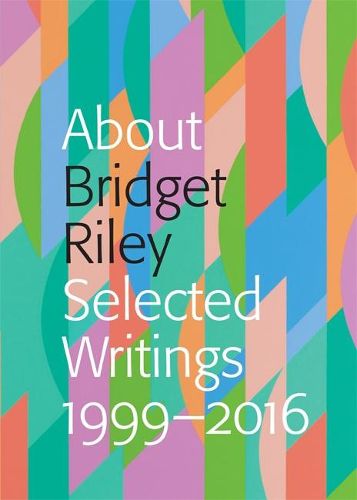Readings Newsletter
Become a Readings Member to make your shopping experience even easier.
Sign in or sign up for free!
You’re not far away from qualifying for FREE standard shipping within Australia
You’ve qualified for FREE standard shipping within Australia
The cart is loading…






The present volume includes the vast majority of significant essays on Bridget Riley written since 1999. This was a particularly fruitful period in the reception of her work, as the discourse broadened and her reputation as one of the most important painters of her generation solidified.
The essays range from biographical and career overviews to detailed analysis of specific aspects or themes that occur throughout Riley’s career. The selection reflects a rich body of work, which sustains the interest of important authors, as evidenced by multiple pieces by Eric de Chassey, Lynne Cooke, Robert Kudielka, Paul Moorhouse and Richard Shiff. Together, this volume of essays tells the story of an artist whose art has continuously evolved over nearly six decades.
Most of the critical texts have been written in close consultation with the artist, the result of long conversations, sudio visits and archive access. Largely commissioned on the occasion of particular exhibitions, these essays track and trace Riley’s focus and influences at different moments in time. Each essay builds upon the next, with more recent authors clearly responding and referencing earlier discourse. The result is a collection of great breadth and cohesion.
An important resource, About Bridget Riley represents a monumental body of research and analysis by some of the most important art historians of today. It also offers the opportunity for the reader and the viewer to approach Riley from a plethora of perspectives to form their own view, much reflecting Riley’s own particular approach to art history. As John Elderfield puts it: ‘Effectively, Riley makes a pact with the viewer, through the medium of the painting, that they will collaborate in eliciting from a particular painting a particular sort of mobile visual array. And, when the viewer stops looking at the painting, it will therefore be as if leaving something that continues to go on.
$9.00 standard shipping within Australia
FREE standard shipping within Australia for orders over $100.00
Express & International shipping calculated at checkout
The present volume includes the vast majority of significant essays on Bridget Riley written since 1999. This was a particularly fruitful period in the reception of her work, as the discourse broadened and her reputation as one of the most important painters of her generation solidified.
The essays range from biographical and career overviews to detailed analysis of specific aspects or themes that occur throughout Riley’s career. The selection reflects a rich body of work, which sustains the interest of important authors, as evidenced by multiple pieces by Eric de Chassey, Lynne Cooke, Robert Kudielka, Paul Moorhouse and Richard Shiff. Together, this volume of essays tells the story of an artist whose art has continuously evolved over nearly six decades.
Most of the critical texts have been written in close consultation with the artist, the result of long conversations, sudio visits and archive access. Largely commissioned on the occasion of particular exhibitions, these essays track and trace Riley’s focus and influences at different moments in time. Each essay builds upon the next, with more recent authors clearly responding and referencing earlier discourse. The result is a collection of great breadth and cohesion.
An important resource, About Bridget Riley represents a monumental body of research and analysis by some of the most important art historians of today. It also offers the opportunity for the reader and the viewer to approach Riley from a plethora of perspectives to form their own view, much reflecting Riley’s own particular approach to art history. As John Elderfield puts it: ‘Effectively, Riley makes a pact with the viewer, through the medium of the painting, that they will collaborate in eliciting from a particular painting a particular sort of mobile visual array. And, when the viewer stops looking at the painting, it will therefore be as if leaving something that continues to go on.